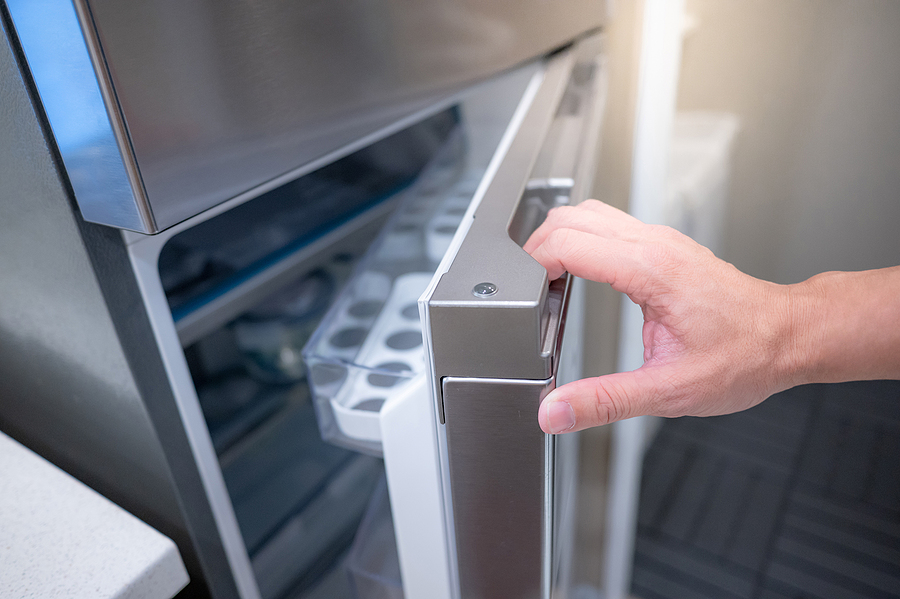
05 Jul What Should You Store in Your Fridge Door?
(Eatingwell.com) After a trip to the grocery store, unloading food into the refrigerator might seem like a simple process, but it’s not as straightforward as you may think. From the shelves to the drawers and the refrigerator door, where things go in the fridge matters for proper food safety and storage. Here are five foods you should never store in the refrigerator door:
Milk
While it may seem like a convenient place to store large gallons of milk, the door is actually the worst option. Warm temperatures allow bacteria to grow, so storing milk in the door, where it will be consistently exposed, will only increase the odds of spoilage. Instead, the Dairy Council of California recommends storing milk in the back of the refrigerator where the temperatures are coldest. (Or, if you’re looking for a longer-term storage solution, learn how to freeze milk.)
Eggs
Although some refrigerators feature a special, egg-shaped shelf in the door, it’s not in the right location to maintain proper egg-storage temperatures. According to the American Egg Board, eggs are best stored on an inside shelf where the temperature is more consistent. Eggs should also be kept in their original carton, as the AEB notes that the carton will prevent moisture loss and protect the eggs from absorbing any odors or flavors from other foods.
Meat and Poultry
Whenever you’re cooking with raw meat or poultry, it’s important to handle it safely so no one gets sick-and that starts with storing it correctly. Raw meat and poultry have juices in the packaging which can contaminate other foods if they come into contact with it. Storing these foods on the door isn’t smart because juices may easily drip down. Plus, the inconsistent temperatures of the refrigerator door aren’t safe either. The best place for raw meat and poultry is on the bottom shelf of the fridge, wrapped tightly in plastic or in a sealed container to prevent juices from leaking.
Fruits and Vegetables
If you’re looking to grab a handful of grapes or carrot sticks for a healthy afternoon snack, the refrigerator door provides easy access. But there’s a better place for fruits and vegetables: the crisper drawers. The specialty drawers “provide an optimal storage environment for fruits and vegetables,” according to the USDA. Most crisper drawers allow the humidity level to be controlled, so you can designate separate compartments, one for fruits and one for vegetables.
Cheese
Similar to fruits and vegetables, there’s a special place for cheese in the fridge, and it’s not the door. Instead, the slim drawer (depending on your fridge’s layout, it may be in the middle or at the bottom) is designed to store cheese. As the USDA explains, “Additional cool air is directed into the drawer to keep items very cold without freezing,” which is perfect for cheese. This drawer is also a good location to store deli meats.
Foods You Should Store in the Refrigerator Door
Condiments
The refrigerator door is the perfect place to store condiments. From maple syrup to ketchup and mayo, go ahead and store those bottles in the door. These ingredients have a longer shelf life, so they can handle the fluctuating temperatures of the door (FYI: condiments like maple syrup and ketchup don’t need to be refrigerated in the first place, but many people choose to do so for taste). In fact, some brands like Hellmann’s provide instructions to store their product in the refrigerator door directly on the bottle.
Salad Dressings
Similar to condiments, bottles of salad dressing can be stored in the refrigerator door. According to the USDA, opened bottles of salad dressing can be refrigerated for up to two months, but be sure to check the date printed on the bottle. And if you’re storing an oil-based dressing, don’t worry if it looks like things have separated in the fridge. Just shake the bottle before using and the dressing will be good to go.
Soft Drinks
Whether it’s a can of ginger ale or a box of apple juice, the refrigerator door is perfect for soft drinks. In fact, most soft drinks don’t even need to be refrigerated in the first place, but they often are for taste. If you prefer a chilled beverage, go ahead and load those cans of soda or sparkling water onto the refrigerator door (and depending on your fridge, there may even be a designated shelf).

Sorry, the comment form is closed at this time.